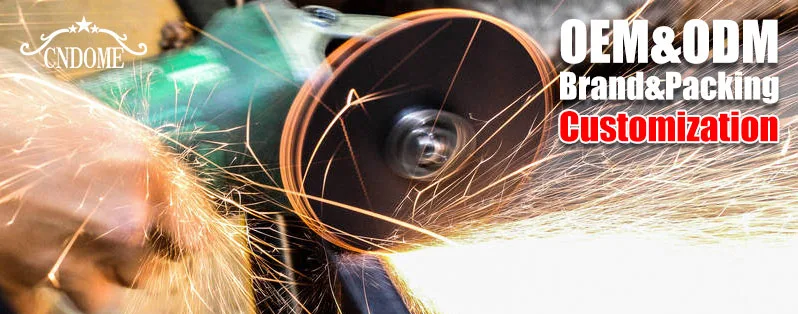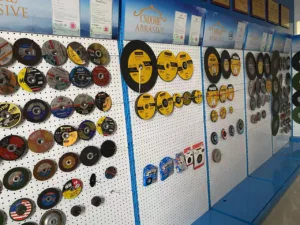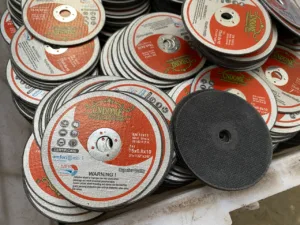Angle grinders are indispensable tools in workshops and construction sites, offering versatility and power for various cutting and grinding tasks. However, their effectiveness hinges greatly on the proper installation of grinding wheels. Failing to follow correct procedures can lead to accidents, injuries, and damage to both equipment and workpieces. Let’s explore the essential precautions to take when installing grinding wheels on angle grinders to ensure safety and efficiency.
1. Wear Personal Protective Equipment (PPE):
Before beginning any work with angle grinders, ensure you’re equipped with the appropriate personal protective equipment. This includes safety glasses or goggles to protect your eyes from sparks and debris, gloves to shield your hands, and ear protection if working in noisy environments. Additionally, consider wearing a face shield for added protection.
2. Choose the Right Wheel for the Job:
Selecting the correct grinding wheel for the specific task is crucial for safety and performance. Ensure that the wheel is compatible with the material you’ll be working on and suitable for use with your angle grinder. Check the wheel’s specifications for maximum speed ratings and ensure they match or exceed the grinder’s RPM (revolutions per minute) rating.
3. Inspect the Grinding Wheel:
Before installation, thoroughly inspect the grinding wheel for any signs of damage or wear. Look for cracks, chips, or uneven wear, as these can compromise the wheel’s integrity and lead to failure during use. Never install a damaged or compromised grinding wheel, as it poses a significant safety hazard.
4. Mount the Wheel Correctly:
Proper mounting of the grinding wheel is essential for safety and performance. Ensure that the wheel is securely attached to the grinder’s spindle and that the mounting hardware, such as flanges and washers, are in good condition. Follow the manufacturer’s instructions for mounting the wheel, including tightening the retaining nut to the specified torque.
5. Verify Rotation Direction:
Before powering on the angle grinder, verify the rotation direction of the grinding wheel. Most grinding wheels have directional arrows indicating the correct rotation. Ensure that the wheel is mounted in the proper orientation to prevent accidents and ensure effective grinding performance.
6. Perform a Trial Run:
Once the grinding wheel is installed, perform a brief trial run without any workpiece to ensure smooth and stable operation. Listen for any unusual noises or vibrations, which may indicate installation issues or wheel imbalances. Address any concerns before proceeding with actual grinding tasks.
7. Maintain Proper Guarding:
Angle grinders should always be equipped with the appropriate guards to protect the operator from sparks and debris. Ensure that the wheel guard is properly adjusted and securely fastened in place before starting any work. Never operate an angle grinder without the necessary guarding in place.
8. Practice Safe Operating Procedures:
In addition to precautions during installation, always adhere to safe operating procedures when using angle grinders. Maintain a firm grip on the tool, position yourself safely away from the grinding area, and avoid overreaching or excessive force. Never remove safety guards or attempt to modify the tool while it’s in operation.
Conclusion:
Installing grinding wheels on angle grinders requires careful attention to detail and adherence to safety protocols. By following these precautions, you can minimize the risk of accidents and injuries while maximizing the efficiency and effectiveness of your grinding operations. Remember, safety should always be the top priority when working with power tools like angle grinders.



